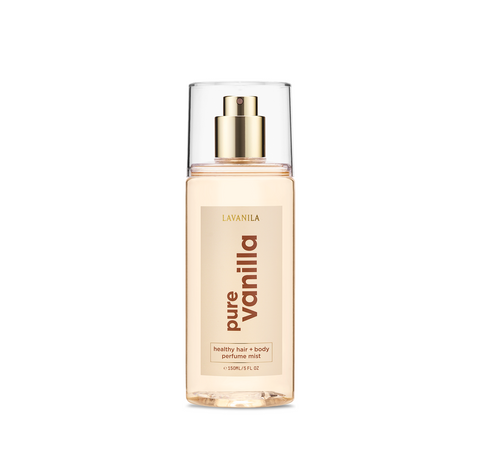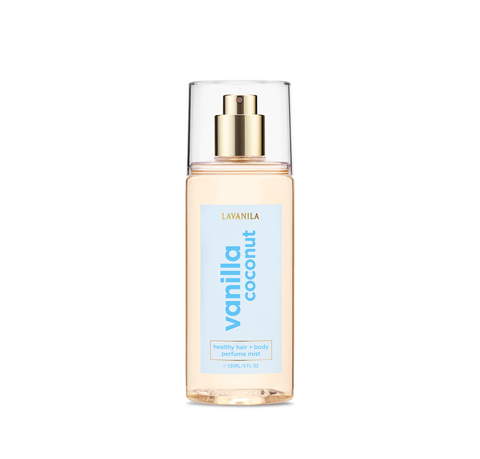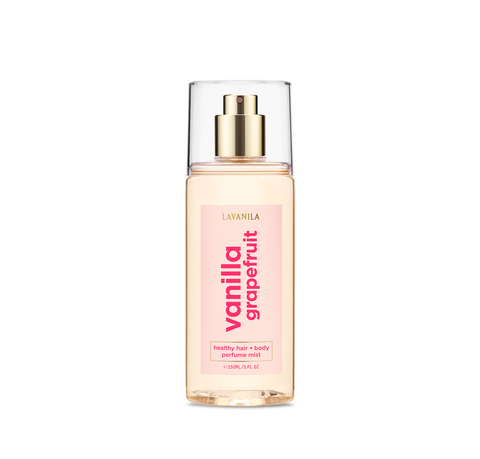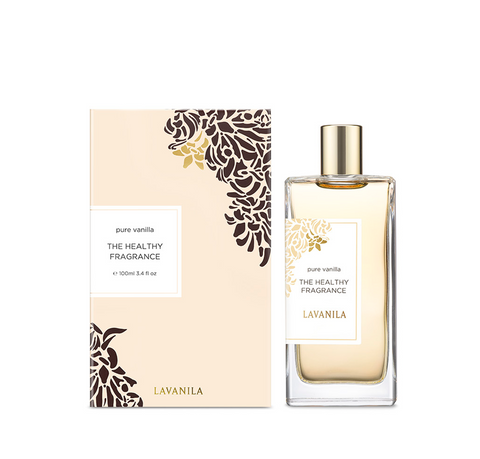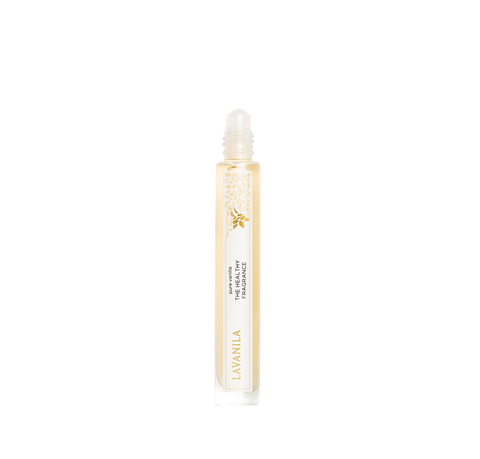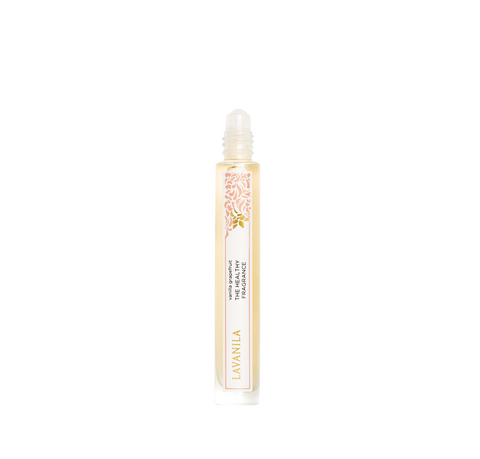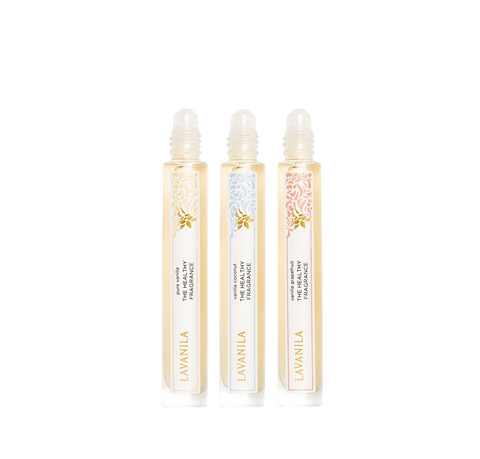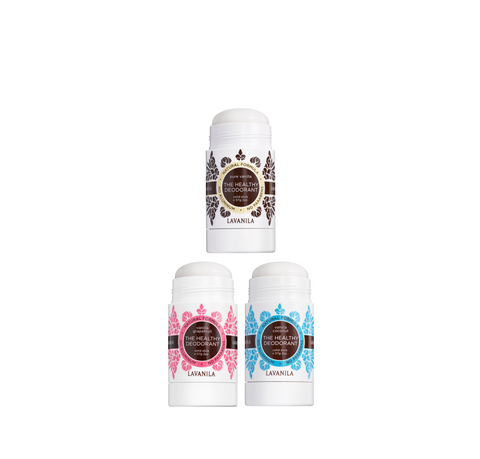When you pick up a bottle of fragrance oil, it may seem harmless, a simple way to add a pleasant scent to your space or daily routine. But many people wonder whether these products are truly safe. Questions like “Are fragrance oils toxic?” are becoming more common as awareness grows about what goes into the scents we use every day. Fragrance oils can contain a mix of natural extracts and artificial fragrance compounds, and the combination can affect both our bodies and the environment. Understanding what’s inside and how it interacts with skin, air, and overall health can help you make informed choices, and it also highlights why natural, clean fragrance alternatives can provide peace of mind without sacrificing the sensory experience.
Are Fragrance Oils Toxic? Understanding the Risks
Fragrance oils are complex mixtures, and the question of toxicity isn’t simple. Some components in artificial fragrance blends are known to irritate the skin, trigger headaches, or contribute to respiratory issues. Many products label their ingredients under the broad term “fragrance,” which can hide chemicals that affect sensitive individuals. People who ask whether fragrance oils are toxic are often concerned about repeated exposure, skin reactions, and the cumulative effects of inhaling scent molecules over time.
The dangers of fragrance aren’t always obvious. While a product may smell pleasant, it can still release volatile organic compounds (VOCs) that linger in the air, or contain ingredients that are sensitizers. That doesn’t mean every fragrance oil is inherently harmful, but evaluating ingredients and understanding the risks helps consumers make choices that protect their health, especially for daily use or for homes with babies and children.
What Are Fragrance Oils Made Of?
Fragrance oils can be crafted from a variety of components, ranging from natural plant extracts to lab-created aroma molecules. The composition determines not only the scent but also the potential for irritation or other health concerns. Learning the difference between natural and artificial components, as well as understanding solvents and carriers, is key to assessing safety.
Natural vs. Artificial Fragrance Components
Natural fragrance components typically come from flowers, fruits, spices, or woods. Essential oils, absolutes, and botanical extracts are combined to create layered scents without relying on synthetic molecules. While natural doesn’t automatically mean non-irritating, many botanical blends are selected for gentleness, and reputable brands provide transparency about what’s included.
Artificial fragrance components, on the other hand, are lab-made molecules designed to mimic natural aromas or create entirely new scents. These compounds often allow for more consistent production and long shelf life, but some can contribute to the dangers of fragrance for babies or adults if used in high concentrations or in combination with other sensitizing chemicals. Common artificial fragrance molecules can persist in the air, react with other compounds, or irritate sensitive skin. Understanding this distinction is crucial for evaluating whether fragrance oils are toxic and for making safer choices.
Common Solvents and Carriers in Fragrance Oils
Fragrance oils are rarely pure essential oils or extracts; they are usually combined with solvents and carriers that help disperse the scent. Alcohol is a common carrier, and some oils use fractionated plant oils or other liquid bases to dilute the fragrance. While these carriers are generally safe, they can also influence how the scent interacts with skin or how long volatile compounds remain airborne.
Knowing the carriers can help you interpret product labels and understand potential risks. For instance, a product using high-quality plant-based alcohol or organic carriers may reduce certain irritants commonly found in conventional formulations. Choosing fragrance oils with transparent, natural carriers is one way to minimize potential exposure to compounds that contribute to the dangers of fragrance.
15% Discount on Your First Order
Subscribe for exclusive sales and promo codes
- Enjoy a 15% discount on your first purchase
- Be the first to know about our special sales and promotions
- Receive unique promo codes available only to our subscribers
The Dangers of Fragrance for Adults: What You Should Know
Adults can experience a range of reactions from fragrance oils, particularly when the product contains artificial fragrance components. Short-term responses may include skin redness, itching, or mild respiratory irritation. In other cases, repeated exposure to certain chemicals in fragrance oils can lead to headaches or more subtle sensitivities over time.
Skin Irritation and Sensitivity Reactions
Skin reactions are among the most common effects of fragrance exposure. Artificial fragrance molecules, even in small amounts, can interact with the outer layers of the skin and trigger irritation or allergic responses. People with sensitive skin, eczema, or other dermatological conditions may be more prone to these effects. Choosing fragrance oils made from botanical blends and gentle carriers can reduce the risk of skin reactions, making daily wear more comfortable.
Respiratory and Environmental Concerns
Fragrance oils release volatile molecules into the air, some of which are VOCs. Inhaling these compounds repeatedly can contribute to respiratory irritation or exacerbate allergies. Indoor environments with multiple scented products can see a buildup of airborne chemicals, making it important to consider the formulation and source of your fragrance oils. Natural, clean formulations tend to emit fewer flagged molecules, reducing the overall impact on air quality and long-term exposure risks.
The Dangers of Fragrance for Babies and Children
Concerns about fragrance toxicity are heightened when it comes to babies and young children. Their skin is thinner, more delicate, and absorbs compounds more readily than adult skin, which makes them more susceptible to irritants. Airborne fragrance molecules can also accumulate in nurseries, affecting breathing and comfort.
Why Young Skin Is More Vulnerable
Infant skin has a weaker barrier, making it easier for chemicals to penetrate. Artificial fragrance components or high concentrations of scented oils may cause redness, irritation, or rashes. For parents or caregivers, selecting fragrance oils with transparent, natural ingredients can help reduce the dangers of fragrance for babies while still allowing a pleasant scent experience.
Airborne Fragrance Risks in Nurseries
In addition to direct contact, fragrance oils release molecules into the air that can linger for hours. This exposure can irritate a baby’s developing respiratory system or exacerbate sensitivities. Choosing plant-based, cleaner formulations can minimize the presence of persistent synthetic molecules, creating a safer environment for infants and children.
How Artificial Fragrance Differs from Botanical Scents
Understanding the difference between artificial fragrance and botanical scents is key to evaluating the safety of fragrance oils. While artificial fragrance molecules are designed for consistency and longevity, they may also persist longer in the air or interact with other compounds to form irritants. Botanical scents rely on natural extracts and essential oils, which provide aroma complexity while often reducing exposure to flagged synthetic chemicals.
Synthetic Aroma Molecules and Their Uses
Synthetic molecules are engineered to replicate specific scents or create entirely new aromas. They allow perfumers to achieve uniformity across batches, but some compounds can contribute to the dangers of fragrance if misused or over-concentrated. Recognizing which products rely heavily on synthetic molecules can help consumers choose cleaner, safer alternatives.
Why Some Synthetics Persist Longer in the Air
Unlike natural oils, which may evaporate more quickly, some synthetic fragrance molecules are semi-volatile or slow to break down. This means they can linger in indoor air, contributing to prolonged exposure and potential irritation. Using fragrance oils that prioritize natural botanical blends can reduce the concentration of these persistent synthetics, lowering the overall risk to skin, respiratory health, and indoor air quality.
How Fragrance Oils Can Affect Indoor Air Quality
Fragrance oils don’t just create pleasant scents; they interact with your environment in ways that can have noticeable effects on indoor air quality. Many oils, especially those containing artificial fragrance molecules, release volatile organic compounds (VOCs) that linger long after application. Even subtle exposures throughout the day can contribute to indoor air pollutants. This is particularly important for individuals who spend a lot of time indoors or who use multiple scented products daily. Understanding the impact of fragrance oils is crucial for anyone concerned about the question, “Are fragrance oils toxic?”
VOCs contribute not only to scent but also to potential irritation, and they can accumulate over time. While some VOCs evaporate quickly, others persist and react with particles in the air, potentially creating secondary pollutants. This highlights why choosing fragrance oils with clean, natural ingredients can reduce the chemical load in your environment, offering a safer, fresher air quality experience for both you and your family.
Volatile Organic Compounds (VOCs) Explained
VOCs are carbon-based chemicals that easily evaporate at room temperature. In fragrance oils, VOCs can include alcohol carriers, stabilizers, and synthetic aroma molecules. Some VOCs are benign, but others are linked to mild irritation, headaches, or allergic reactions. For adults with respiratory sensitivities or individuals prone to migraines, prolonged exposure to VOCs can be particularly noticeable.
The key difference between synthetic and natural fragrance oils is the concentration and type of VOCs released. While synthetic oils often rely on molecules designed for longer-lasting scents, natural, botanical-based oils tend to emit fewer VOCs and break down more quickly. This reduces the cumulative exposure in your home or workspace, making natural oils a safer option for people concerned about indoor air quality.
Long-Term Exposure and Airborne Residue
Even low levels of VOCs or persistent synthetic aroma molecules can have cumulative effects over months or years. Regular use of fragrance oils that contain high concentrations of artificial fragrance molecules may contribute to lingering indoor chemical residue. This residue can interact with dust and other pollutants, potentially aggravating allergies or respiratory sensitivities.
Children and adults alike may experience subtle effects from prolonged exposure, such as chronic irritation, mild headaches, or nasal discomfort. For this reason, many people are increasingly asking whether fragrance oils are toxic, and turning toward natural, plant-based alternatives that prioritize cleaner formulations. Botanical blends, natural carriers, and transparent labeling help minimize lingering chemical residue, creating a healthier environment that supports well-being without sacrificing the sensory experience of fragrance.
 Lavanila’s aloe-based mists offer a clean, gentle way to adapt with the seasons while nourishing your hair and uplifting your senses all year long.
Lavanila’s aloe-based mists offer a clean, gentle way to adapt with the seasons while nourishing your hair and uplifting your senses all year long.
Understanding Sensitivity and Allergic Reactions to Fragrance Oils
Fragrance oils can trigger reactions in sensitive individuals, even when the exposure seems minor. Some people notice immediate responses, while others develop sensitivities over time. Recognizing who is most at risk and understanding the early warning signs is crucial for making informed fragrance choices.
Who Is Most at Risk?
Adults with conditions like eczema, asthma, or chronic headaches are more likely to notice reactions to synthetic fragrance oils. Pregnant individuals and people with chemical sensitivities may also experience heightened effects. Children and infants are particularly vulnerable due to thinner, more permeable skin and developing respiratory systems. Even routine exposure to fragrance oils in indoor environments can increase the likelihood of irritation over time, making safer alternatives especially important for families.
Common Signs of Reaction and Early Warning
Reactions to fragrance oils may appear in a variety of ways:
-
Skin redness, itching, or rash, sometimes appearing hours after contact
-
Sneezing, coughing, or a scratchy throat when in a scented environment
-
Headaches or lightheadedness linked to prolonged exposure
Early recognition of these signs allows individuals to adjust the products they use or choose botanical-based oils with fewer synthetic compounds. Understanding these reactions also emphasizes the importance of evaluating fragrance oils critically and avoiding those with high levels of artificial fragrance molecules.
Decoding Labels: What “Fragrance Oil” Really Means
The term “fragrance oil” can be misleading. Many products list ingredients simply as “fragrance” or “fragrance oil,” which can conceal the actual composition. Without transparency, it is difficult to determine whether the product contains synthetic chemicals that contribute to the dangers of fragrance. Learning to interpret these labels is key for anyone concerned about the safety of fragrance oils.
The Lack of Transparency in Ingredient Listings
Unlike natural, botanical-based oils, conventional fragrance oils often hide synthetic compounds under generic terminology. Ingredients may include solvents, stabilizers, or proprietary synthetic aroma molecules that are not specified. Even products labeled “lightly scented” may contain persistent compounds that emit VOCs or cause skin or respiratory irritation. Transparent brands provide details on carriers, fragrance components, and additives, allowing consumers to assess potential toxicity and environmental impact.
How to Identify Potentially Harmful Chemicals
When reviewing a fragrance oil’s ingredients, look for:
-
Vague terms like “fragrance” or “parfum” without clarification
-
Alcohol-based solvents or stabilizers that release VOCs
-
Known sensitizers or allergens that may affect skin or respiratory health
Selecting oils with full ingredient disclosure, botanical extracts, and plant-based carriers helps minimize exposure to harmful compounds. Natural blends reduce the concentration of flagged synthetic molecules while still providing a rich, enjoyable scent experience.
The Science Behind Perfume Toxicity and Fragrance Oils
Fragrance toxicity is assessed through lab testing, exposure data, and ingredient evaluation. Safety ratings help distinguish products with higher concentrations of flagged compounds from those with cleaner formulations. Understanding how these ratings are determined allows consumers to make more informed choices when selecting fragrance oils.
How Safety Ratings Are Determined

cruelty free

paraben free

phthalate free

all natural fragrance
Toxicity ratings consider skin irritation potential, respiratory effects, and chemical composition. Synthetic aroma molecules, solvents, and stabilizers are all evaluated for their likelihood to cause short-term or cumulative harm. Although not all fragrance oils provide public scores, the methodology emphasizes the importance of ingredient transparency and careful formulation.
Interpreting Toxicity Scores and Warnings
A higher toxicity rating does not necessarily mean immediate danger but signals increased exposure to compounds that may irritate skin or airways over time. Products made with natural, botanical blends tend to score lower on toxicity ratings, offering a safer alternative for daily use. Evaluating toxicity alongside transparent labeling allows consumers to reduce the dangers of fragrance while still enjoying a high-quality scent experience.
Comparing Artificial Fragrance and Natural Alternatives
Artificial fragrance and natural oils achieve similar scent experiences but differ dramatically in safety and environmental impact. Understanding these differences helps consumers select options that protect health without compromising on scent enjoyment.
Botanical Extracts and Essential Oils
Natural fragrance oils use plant-derived ingredients, such as essential oils and absolutes, to create layered aromas. These ingredients generally contain fewer synthetic molecules, emit lower levels of VOCs, and are less likely to trigger cumulative irritation. While natural oils are not guaranteed to prevent all reactions, they provide a safer and more transparent choice for those concerned about the dangers of fragrance.
Why Natural Formulas Reduce Exposure to Common Hazards
Plant-based formulas minimize the presence of synthetic aroma molecules, solvents, and stabilizers that contribute to indoor chemical residue. Reduced VOC emissions lower the risk of respiratory irritation and prolonged exposure, making natural fragrance oils ideal for adults, children, and sensitive users. Transparent labeling also ensures consumers can see exactly what is in the product, giving peace of mind and reinforcing the benefits of clean, botanical-based alternatives.
Benefits of Choosing Clean, Plant-Based Fragrance Oils
When it comes to fragrance oils, not all products are created equal. Choosing clean, plant-based options provides benefits that extend far beyond simply enjoying a pleasing scent. For individuals concerned about health, skin wellness, and indoor air quality, plant-derived oils reduce exposure to potentially harmful synthetic molecules and volatile compounds, offering a safer, more mindful alternative for daily use.
Natural blends rely on essential oils, absolutes, and botanical extracts that are generally gentler on the skin and less likely to emit persistent airborne chemicals. They also break down more naturally in the environment, which can minimize the accumulation of synthetic residues indoors. These qualities make plant-based fragrance oils an ideal choice for households where adults, children, or anyone with sensitivities live. Beyond safety, natural oils often provide more nuanced and complex scents that evolve over time, creating a richer sensory experience compared to the sometimes flat, one-dimensional profiles of artificial fragrance oils.
Gentle on Skin and Safe for Sensitive Users
Skin sensitivity is a common concern with fragrance oils, particularly for adults with delicate or reactive skin, and for children whose skin is more permeable and susceptible to irritants. Plant-based formulations are designed to minimize potential irritants, avoiding synthetic molecules that can trigger redness, itching, or allergic reactions. Even individuals with mild sensitivities can enjoy fragrance oils without worrying about long-term cumulative irritation.
Additionally, botanical ingredients often contain compounds that naturally support skin health. For instance, essential oils derived from vanilla, citrus, or florals can provide antioxidants and moisturizing properties that help maintain skin comfort. By prioritizing gentle ingredients, clean fragrance oils support skin wellness and allow users to enjoy a daily scent routine that feels both indulgent and safe. This is especially important for adults who wear fragrance daily or for families who want to create a fragrant, yet non-irritating environment at home.
Lower Risk of Allergic and Irritative Responses
Allergic reactions to fragrance oils are often linked to repeated exposure to synthetic aroma molecules, stabilizers, or chemical carriers. Using plant-based fragrance oils lowers the presence of these flagged compounds, reducing the likelihood of both immediate and cumulative reactions.
Botanical blends provide naturally complex scents without relying on artificial chemicals that can linger on the skin or in the air. For households with children, babies, or individuals with respiratory sensitivities, these safer alternatives create a more comfortable environment while still delivering the enjoyment of high-quality fragrances. Even subtle exposure to synthetic molecules can exacerbate sensitivities over time, so opting for plant-based oils not only prevents short-term irritation but also contributes to long-term wellness and a cleaner indoor atmosphere.
How Lavanila Crafts Safer, Natural Fragrance Oils
Lavanila approaches fragrance formulation with a focus on safety, transparency, and an elevated sensory experience. Every fragrance oil is designed with clean, plant-based ingredients that provide beautiful aromas without unnecessary synthetic additives. By carefully selecting essential oils, absolutes, and natural carriers, Lavanila minimizes the presence of flagged chemicals while maximizing the richness, longevity, and authenticity of each scent.
The attention to formulation ensures that each oil is suitable for daily wear, even for sensitive users, while also offering nuanced aromatic profiles that evolve naturally over time. Lavanila’s commitment to clean fragrance extends beyond individual safety—it reflects an ethos of holistic wellness, environmental responsibility, and thoughtful, deliberate product development.
Our Commitment to Clean, Transparent Ingredients
Transparency is at the core of Lavanila’s approach. All fragrance oils provide clear, detailed ingredient listings so consumers can understand exactly what is in each product. This level of openness allows users to make informed decisions, reducing exposure to substances that may contribute to the dangers of fragrance or irritation.
Plant-based ingredients are sourced thoughtfully, emphasizing purity, sustainability, and gentle formulation. Each product undergoes rigorous review to maintain safety and quality standards, ensuring that the oils are as effective as they are clean. By prioritizing transparency and safety, Lavanila sets a higher standard in the fragrance industry, empowering consumers to select products that align with their wellness priorities and lifestyle values.
Signature Lavanila Blends and Their Benefits
Lavanila’s signature fragrance oils, such as Vanilla Grapefruit and Pure Vanilla, exemplify how botanical blends can deliver rich, long-lasting aromas without relying on synthetic molecules. These blends provide multiple benefits: they are gentle on the skin, produce lower VOC emissions, and offer luxurious scent profiles that evolve naturally over the course of the day.
In addition to their sensory appeal, these blends help maintain a healthier indoor environment. By using plant-based oils, Lavanila ensures that households can enjoy daily fragrance without the worry of cumulative airborne chemicals or irritation. Signature blends are crafted to delight the senses while supporting wellness, demonstrating that natural fragrance oils can be both indulgent and responsible.
Why Transparency Matters for Healthy Fragrance Choices
Understanding what goes into a fragrance oil is critical for safe, informed use. Ingredient transparency allows consumers to evaluate potential risks, avoid compounds linked to irritation or VOC emissions, and select products that align with their health priorities. Without clear labeling, it is difficult to know whether a fragrance oil contains synthetic molecules that can contribute to the dangers of fragrance.
Lavanila sets a higher standard by disclosing all components and prioritizing plant-based ingredients. This transparency empowers users to make conscious choices, reduce exposure to potential irritants, and enjoy a cleaner, safer fragrance routine. Clear labeling also builds trust and allows consumers to feel confident in the quality, safety, and authenticity of the products they choose.
Ingredient Lists You Can Actually Trust
Unlike conventional fragrance oils that often hide synthetic molecules behind vague terms like “fragrance” or “parfum,” Lavanila provides detailed ingredient listings for every product. Users can see the exact botanical extracts, essential oils, and natural carriers included in each formula.
This level of transparency reduces uncertainty and gives consumers confidence that they are selecting fragrance oils that minimize exposure to flagged chemicals. By knowing exactly what is in a product, users can safely introduce scents into their daily routine without worrying about hidden irritants, airborne residues, or long-term effects from synthetic molecules.
Elevating Standards Across the Industry
By prioritizing transparency, plant-based ingredients, and gentle formulations, Lavanila elevates expectations for the fragrance industry. Their approach encourages other brands to adopt cleaner, more accountable practices while helping consumers recognize the value of natural, carefully crafted fragrance oils.
So, are fragrance oils toxic? Lavanila provides a trusted alternative that demonstrates it is possible to enjoy fragrance without compromising safety or wellness. Their practices highlight how responsible sourcing, thoughtful formulation, and transparent labeling can collectively set new standards for clean fragrance.
Conclusion: Making Informed Choices About Fragrance Oils
Choosing fragrance oils involves balancing enjoyment with safety. Awareness of potential risks—such as synthetic molecules, VOCs, and irritants—empowers consumers to select products that minimize exposure while delivering a luxurious scent experience. Plant-based, natural fragrance oils provide a cleaner, gentler option that is safer for adults, children, and sensitive individuals.
Summary of Risks and Safer Alternatives
Fragrance oils containing artificial compounds can contribute to skin irritation, allergic responses, and airborne residue, creating cumulative risks over time. Botanical blends and essential oil-based formulations reduce these hazards, offering safer alternatives for daily use. By selecting transparent, natural fragrance oils, consumers can maintain indoor air quality, protect sensitive skin, and enjoy scents without compromise.
Explore Lavanila’s Clean Fragrance Collection
Lavanila’s collection of natural fragrance oils demonstrates that plant-based formulas can provide rich, lasting scents without relying on synthetic molecules. From Pure Vanilla to Vanilla Sugarcane, each fragrance is crafted with transparency, safety, and sensory enjoyment in mind. Choosing these products ensures a healthier approach to fragrance, allowing you to enjoy beautiful aromas while minimizing potential exposure to the dangers of artificial fragrance.
 Clean and uncomplicated
Clean and uncomplicated

 Featured In
Featured In







vegan

gentle formula

100% recylable

aluminum free
